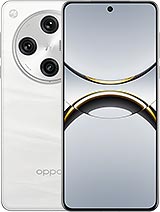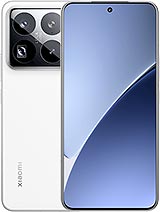Bad luck or the best yet? The OnePlus 13 is one of the best performing Android phones for October, thanks to his Snapdragon 8 Elite chipset. The new model also increases the battery capacity to 6,000 mAh (600 mAh more than the 12).
It also ditches optical fingerprint readers in favor of one ultrasonic reader. Plus, it finally offers a dust and water resistance rating worthy of a flagship (IP68/69 vs. IP65). It can’t all be good news, though: the OnePlus 13 is slightly more expensive than its predecessor – the base 12/256GB model starts at CNY 4,500while the OnePlus 12 12/256GB cost CNY 4,300. It is a small increase, but we can expect a similar increase for the world price. We don’t know what that is yet, but the OnePlus 12 (12/256GB) cost $800/€950/£850/₹65,000 at launch.
| Configuration | OnePlus 13 prices |
|---|---|
| 12GB/256GB | CNY 4,500 ($630) |
| 12GB/512GB | CNY 4,900 ($690) |
| 16GB/512GB | CNY 5,300 ($745) |
| 24GB/1TB | 6,000 CNY ($840) |
OnePlus switched to a triple 50MP camera this generation. The main one is still a 50 MP LYT-808 (1/1.43”), the periscope is slightly different with 73mm 50 MP LYT-600 (vs. 70mm 64 MP OV64B) and the ultra-wide is a 50 MP S5KJN5 (vs. 48 MP IMX581). Discussions about picture quality will have to wait until the review.
Let’s look at the competition. The OnePlus 13 shares the top spot in the AnTuTu charts with the iQOO 13, a very similar phone – same chipset, display and even cameras. The back is different: it has an RGB LED and loses wireless charging to gain an extra 150 mAh battery. The iQOO 13 is slightly cheaper than the OnePlus at CNY 4,000 for a 12/256GB model.
The Xiaomi 15 Pro also uses the 8 Elite chipset and also has a triple 50MP camera – this one with a 120mm periscope. It has a slightly smaller 6.73-inch QHD+ LTPO display. And there is the vanilla option with a 6.36” display, but it is not a direct competitor of the OnePlus 13. The Xiaomi 15 Pro (12/256GB) costs CNY 5,300making it more expensive than the OnePlus.
The Realme GT7 Pro is a cheaper alternative to the OnePlus 13 and iQOO 13. The 6.78” LTPO screen has a lower resolution (1264p+ vs. 1440p+), the 50 MP main screen has a smaller sensor (1/1.56”) and the ultra-wide screen is only 8 MP. But the battery is the largest yet, 6,500 mAh, with 120W wired charging only. And you get the same Snapdragon 8 Elite chipset. The 12/256GB model starts at CNY 3,600.
The Honor Magic7 Pro is another Snapdragon 8 Elite phone. This has a 6.8-inch 1280p+ screen and a smaller 5,850 mAh battery. The 60mm periscope stuns with a 200MP sensor, while the 50MP main camera has a larger 1/1.3” sensor, while the ultra-wide is also 50MP. This one is an expensive option CNY 5,700 for a 12/256 GB device.
The vivo X200 Pro and Oppo Find X8 Pro are two representatives of the Dimensity 9400 camp. Check out our Snapdragon 8 Elite vs. Dimensity 9400 benchmark battle for a look at performance. Either way, both phones have a 6.78-inch LTPO display with a 1260p+/1264+ resolution. The Oppo has a triple 50 MP camera, while the vivo has a 200 MP periscope like the Honor (this one with a longer 85 mm lens). The batteries are also about the same: 6,000 mAh versus 5,910 mAh and 90W/30W versus 80W/50W charging.
The vivo X200 Pro is sold for CNY 5,300 for a 12/256 GB device, the Oppo Find X8 Pro is the same CNY 5,300 for a 12/256 GB phone.


vivo X200 Pro • Oppo Find X8 Pro
Now comes the big question: if you’re in the market for a new flagship phone, will the OnePlus 13 be at the top of your list? Unlike some of the devices mentioned above, it will be available worldwide, even in the US, making it an option for more people.










